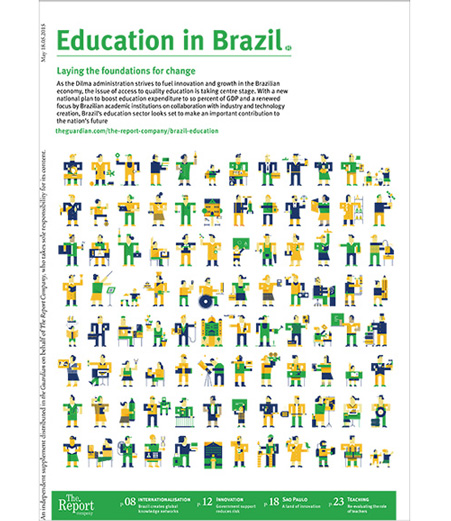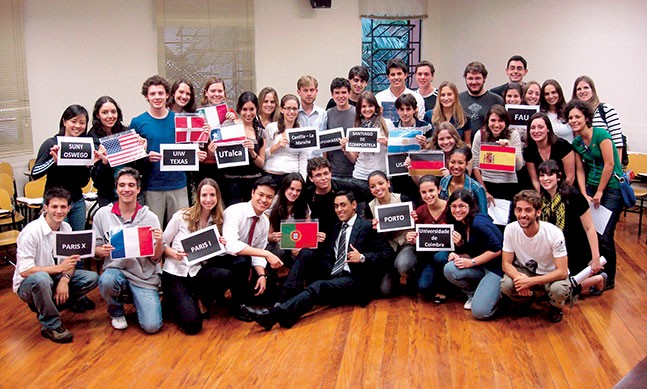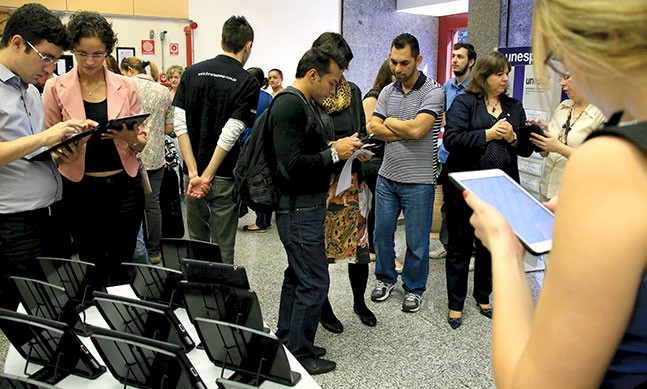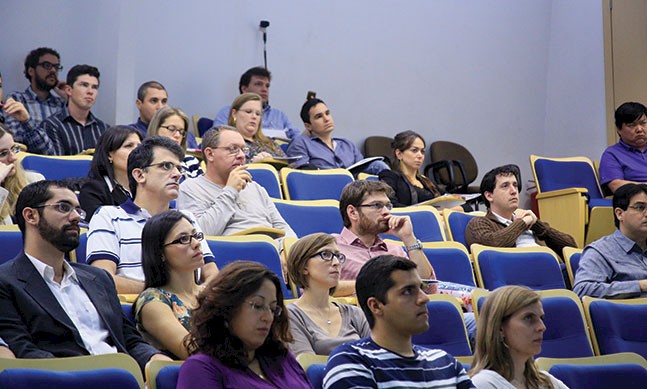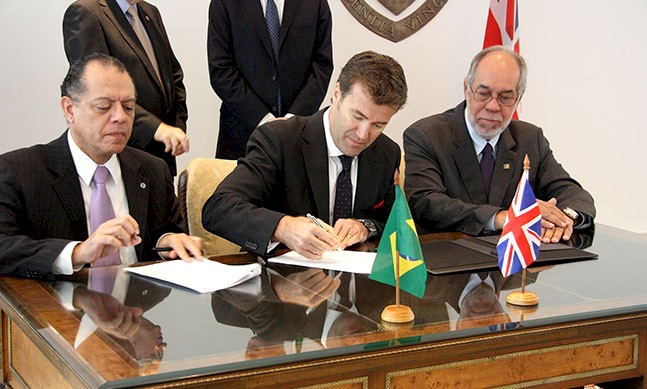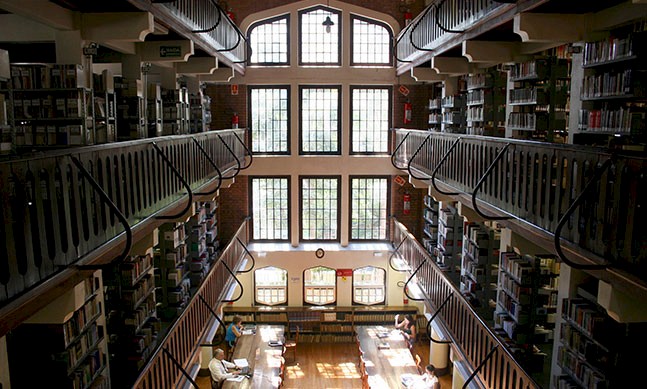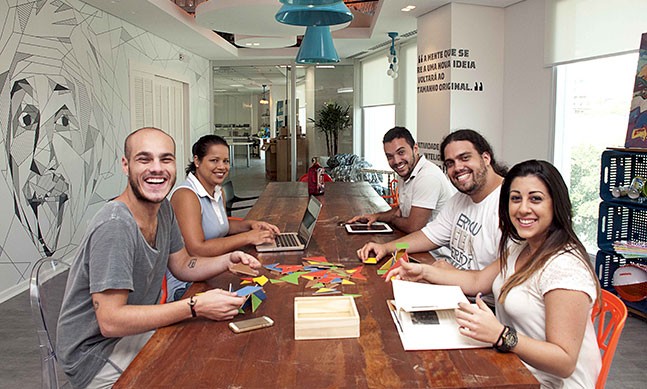Founded in 1945, Brazil’s National Confederation of Commerce, Goods, Services and Tourism (CNC), represents one quarter of the country’s GDP. It also oversees one of the world’s most successful social development programmes, Sesc, from which over 50 million Brazilians have benefitted since its inception, and Senac, dedicated to professional education and training. Ernane Galveas is an economic consultant to the confederation. A former chairman of the Brazilian central bank and also former minister of finance, he has been critical of the current administration’s economic policy model. He spoke to The Report Company about his view of the Brazilian economy and its current reliance on consumption as a means to stimulate growth.
The Report Company: You have written articles in the press recommending economic reform and discussing the lack of investor confidence in Brazil under the current economic policy model. What agenda would you like to see the government pursue?
Ernane Galveas: The government has been working with the so-called “Lula model” for some time. Household consumption has grown steadily, but the GDP is formed by consumption and investment. If a country consumes more, it will invest less, and vice versa. Savings in Brazil stand at around 14 percent of GDP, which is very low. Investment is about 17 percent, when it should be up to 25 percent.
We now face a dilemma and need to re-evaluate the model, to remove certain consumption subsidies, reduce the incentives for purchasing cars, washing machines, refrigerators and even the financing programs via BNDES. The problem is that the government does not have enough resources to invest. The government has been spending more than it collects in taxes for a long time. Public debt has been increasing and will do further as a result of high interest rates. The tax burden is at its limits and the government has no alternative but to keep it at high levels at the present time.
TRC: If this model is no longer working, where does Brazil go from here?
EG: Brazil’s GDP will not grow much this year and I don’t think next year will be different. Who knows what will happen from 2016 onwards, as we are going through very challenging times.
We need to invest in infrastructure, but the government does not have the means to do so and the private sector’s confidence is low. The private sector is also overtaxed, so it has few resources to invest, while the public sector spends more than it collects. Foreign companies are expected to come to Brazil to build roads, ports and power plants, but the confidence in the country’s business environment is diminished.
TRC: Brazil has been considered a very closed country for a long time. Do you think the country is finally opening up to the world and becoming more competitive?
EG: No, it is still closed. Both exports and imports had negative growth in 2013 and 2014. The world is more and more globalised, which means it works like a marathon. Brazil is running against India, China, the United States and a few countries in Europe. The problem is that these countries are running free, while Brazil is running with a 40kg bag of cement on its back.
Private companies face tax rates of up to 40 percent. With such a heavy burden and little infrastructure, it is very hard to be competitive. How can we compete against the Chinese, who have a series of advantages like lower wages, a more favourable exchange rate and better infrastructure? These elements determine the competitiveness and productivity of a country. Brazilian productivity is hampered by high production costs, mainly wages, and by lacking infrastructure. Competitiveness, however, depends more on tax structure. Brazilian companies are battered, because we have not been dealing efficiently with taxation, foreign exchange rates and interest rates for a long time.
“People have been overstating everything that is wrong with education in Brazil, and that, without improvement, Brazil would never grow.”Tweet This
TRC: At Davos in January 2014, some commentators were speaking of a mid-life crisis for the BRIC countries. Do you think that is the case, or are there still good opportunities out there for investors?
EG: Investors, especially foreign investors, depend a lot on legal certainties. In some sectors, such as roads, railways and electricity, foreign investors have become suspicious about the lack of legal assurance. The Lula administration got in the way of a few contracts and the Dilma administration did not abide by contracts that had already been signed in the electricity sector. That harmed the trust of both national and international investors.
We are still receiving foreign direct investments of around US$60 billion a year, but an almost equal amount of speculative investment also enters the country, as foreign investors take advantage of the high interest rates. They speculate in the stock market or in the government bonds market. Our balance of payments account has a deficit of US$90 billion every year. Since production costs are very high, and goods and services are very expensive, Brazilians travel a lot to shop abroad. Everything weighs heavily on the balance of payments: travelling costs, profit remissions, interest payments and royalties.
TRC: The government wants the private sector to invest more in innovation, science and technology. Do you think that this is realistic?
EG: The only incentive the government can offer is tax reduction. But it is not able to, though. It doesn’t even have enough resources to maintain the most essential government services.
TRC: What is your take on the current prioritisation of education?
EG: The government realised that is not capable of training technical workers, so it started handing out money to the so-called S-System (Senai for industry, Senac for commerce, Senar for agriculture), which readies professionals for the market. Industry is very competent in training people. Senac is very competent, as well, especially in training nurses and health professionals. The government, therefore, discovered that it could better help the country with vocational education. Since the government is not capable of doing this by itself, it created PRONATEC, through which it transfers money to the S-System to train professionals, and this has been working well.
People have been overstating everything that is wrong with education in Brazil, and that, without improvement, Brazil would never grow. However, education in Brazil has never been good and the country has managed to grow. At certain times, Brazil grew more than every other country in the world. In the 1960s and 1970s, Brazil grew faster than Japan. The strong growth was interrupted by the dual oil shocks, which exposed the country’s vulnerability and changed things around.
“Students should be taught with computers or tablets, and from the beginning, learn to calculate things, to code software, and to use the new information technology resources.”Tweet This
TRC: The National Education Plan has very ambitious goals, one of which is to increase the number of students in higher education in a short time. What is your take on the challenge of increasing both quantity and quality?
EG: I think the plan has been very well designed, but the government is not capable of executing it. There are not enough teachers, schools, equipment or books. Brazilian schoolbooks are lacking in quality, teachers don’t have proper training and the schools are ill-equipped. Everything is done via computers today and every professional needs to know how to use one. Machines don’t have levers anymore and people operate them through computers.
Students should be taught with computers or tablets, and from the beginning, learn to calculate things, to code software, and to use the new information technology resources.
If you visit the factory floor of a car maker today, you will be amazed at the level of automation. Machines do everything.
It is crucial that schools have computers for their students. Brazil is under a very strong socialist pressure, a belief that capitalism has failed, and books used in class have a clear leftist inclination. This is disgraceful. You can’t move forward like that. Brazil has a mixed economy, and its largest companies are at the hands of the government: Petrobras, Eletrobras, Vale, Banco do Brasil, Caixa Economica Federal and BNDES. Our economy is something closer to that of China. In that way, we are a lot like China. The Brazilian government has already seized the most important political and economic sectors in the country. The main idea is that there needs to be a government counterpoint to the private sector.
TRC: What is Senac’s vocation and how successful has it been?
EG: We understand how important education is and how important it is to have a well-trained workforce. This system does not depend on the government, as companies contribute with a percentage of their payrolls. We work in three different areas: commerce, services and tourism, through training of professionals for restaurants, hotels, pharmacies, tourism, as well as for health services. We train about two million students every year.
As for success stories, I will give you an example in the health sector. We train the highest number of nurses in Brazil. We have trucks that go where there are no schools. Senac is there. They are mobile schools. They go to a different place every three months. We provide nursing education for smaller hospitals. We are the most important provider of professionals for the health sector in Brazil. Things are no different in the tourism sector, and we are working on computer science now. At all of our schools, students work with computers and speak English.
TRC: What would you say to those still concerned with a lack of trained professionals in the country?
EG: We think we are improving and doing a good job in the S-System. In addition to Senac, there are other organisations that train people for a variety of professions. For instance, if a steel company wants to come to Brazil and doesn’t find enough well-trained workers, it can hire institutions such as Getulio Vargas Foundation (FGV) and Dom Cabral Foundation, which will provide in-company training. Another solution is to bring professionals from abroad. The Chinese do that quite often, using a foreign work force for construction projects. The biggest problem in Brazil is our cumbersome tax system. Brazil is not like Norway, Sweden or England, where taxes are high but public services and infrastructure are likewise superior. There is still a lot to be done.



